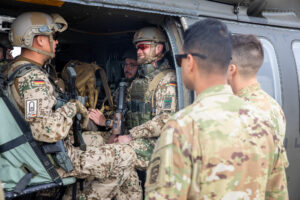
DUGWAY, Utah — The Army is exploring the potential for further Future Vertical Lift (FVL) information sharing agreements with international partners, with several countries expressing interest in growing cooperation on aviation modernization efforts following participation at the service’s recent EDGE 22 experiment. After inviting seven countries to participate in the FVL-led EDGE22 event at Dugway Proving Ground in Utah, Brig. Gen. Rob Barrie, the Army’s program executive officer for aviation, confirmed there is interest in additional agreements similar to the recent…

 By
By 











